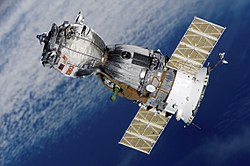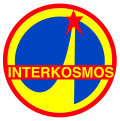 Mission Patch, depicting Surya in his chariot. | |
| COSPAR ID | 1984-032A |
|---|---|
| SATCAT no. | 14872 |
| Mission duration | 181 days, 21 hours, 48 minutes, |
| Orbits completed | ~2,935 |
| Spacecraft properties | |
| Spacecraft type | Soyuz-T |
| Manufacturer | NPO Energia |
| Launch mass | 6,850 kilograms (15,100 lb) |
| Landing mass | 2,800 kilograms (6,200 lb) |
| Crew | |
| Crew size | 3 |
| Launching | Yury Malyshev Gennady Strekalov Rakesh Sharma |
| Landing | Leonid Kizim Vladimir Solovyov Oleg Atkov |
| Callsign | Jupiter |
| Start of mission | |
| Launch date | 3 April 1984, 13:08:00 UTC |
| Rocket | Soyuz-U |
| Launch site | Baikonur 31/6 |
| End of mission | |
| Landing date | 2 October 1984, 10:57:00 UTC |
| Landing site | 46 kilometres (29 mi) E of Arkalyk |
| Orbital parameters | |
| Reference system | Geocentric |
| Regime | Low Earth |
| Perigee altitude | 195 kilometres (121 mi) |
| Apogee altitude | 224 kilometres (139 mi) |
| Inclination | 51.6 degrees |
| Period | 88.7 minutes |
| Docking with Salyut 7 | |
 Rakesh Sharma, Yury Malyshev and Gennadi Strekalov. Soyuz programme (Crewed missions) | |
Soyuz T-11 was the sixth expedition to the Soviet Salyut 7 space station, which in 1984 carried the first Indian cosmonaut along with Soviet crew members.
Contents
Salyut 7 was uncrewed after the undocking of Soyuz T-11 in October 1984 until Soyuz T-13 docked with the station in June 1985. Salyut 7 developed problems during the time it was uncrewed, which meant that the crew of Soyuz T-13 had to perform a manual docking and do repairs to the station.

